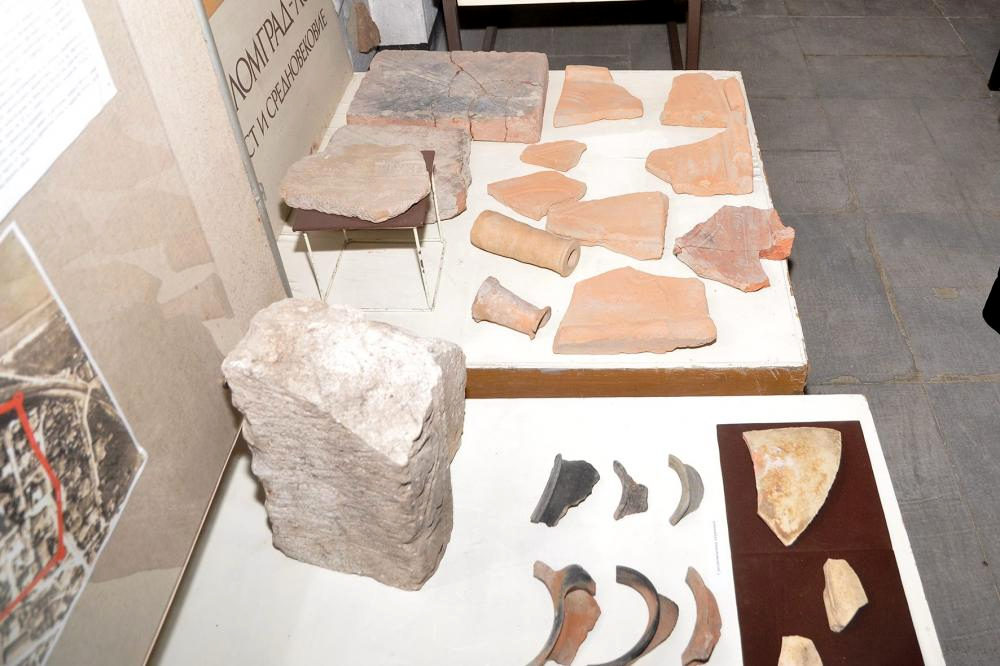The archaeologists who continued this summer the excavations of the Early Roman camp and fortress Almus in the town of Lom came across valuable finds. These findings shed light on the history of the whole region near the Danube River. The first excavations of the Roman city Almus were made between 1986 and 1990. The surveys resumed around 2015 and last year and in 2019 they continued with the financial support of the Bulgarian Ministry of Culture and Lom Municipality. The efforts of the archaeologists were aimed at studying the early period of the development of the Roman fortress Almus. The layers found by the archaeologists date back to the period of the Flavii – the second half of the first century AD, including the early fortress wall and a destroyed military barrack which was burnt in unknown circumstances. The layers of the early periods of the Roman presence on these lands are well-preserved and the findings discovered there provide valuable insights into the history of Lom and the Bulgarian lands in that period, Valeri Stoichkov, curator at the Historical Museum in Lom who participated at the archaeological researches told the Bulgarian National Radio:
We are talking about one of the importantfortified points of the Lower Danube border region which along with the cities Ratsaria and Bononia is among the places with earliest presence of Roman military units. The wars held at that time had variable success and perhaps this early Roman camp was destroyed during the Thracian wars of Emperor Trajan. The finds discovered in this military camp site are very interesting for the science. A group of orders found there is similar to the ones that are nowadays bestowed on people for military merits. Back in that period they were given to warriors with special merits. One of them was made of high-quality gold and weighs over 1 gram and probably served as a prize to a senior military centurion or a person of higher military rank. The ceramics we have discovered in the military buildings is also very interesting. These legionnaires received high salaries and were able to maintain higher standard of living than the rest of the population. That is why the ceramic pots we have found there are luxurious.

The ruins of a public building dating back to the 2nd and the 3rd century AD are a very important finding for the archaeologists. Its walls were painted in different colors – red, yellow, green, white, which proves that the inhabitants of this building were people of high social status. We also discovered in this building weighs for scales corresponding to the Roman measuring system which makes us think that the discovered building was once used for commercial and control activities and perhaps served as customs office, Valeri Stoichkov specifies and adds:
We connected this data with a short evidence according to which, Almus fortress was the westernmost point of the Illyrian customs complex. We cannot rule out the possibility that the customs activity in the city was connected with the building we have been exploring. This building was destroyed in the middle of the 3rd century during the Gothic invasions which at that time mainly occurred on the Lower Danube valley. Data of another building registered during archaeological studies in 1990 is also very interesting. It is also military barracks, but its furnishing was more modest. However, this building also sheds light on this historical period. That is why we assess our job as successful as a whole. We did not expect to find such well-preserved layers of early periods that would enrich our knowledge of the history of the Bulgarian lands, Valeri Stoichkov concludes.
Edited by: Gergana Mancheva (publication of Radio Vidin)
English version: Kostadin Atanasov
Photos: medianews.bgThe Bulgarian Orthodox Church honors the memory of St. Nicholas the Wonderworker on December 6. He is called the saint of mercy because his entire life was dedicated to supporting the poor, the suffering, the innocent and the wronged. His words had an..
A group of Bulgarian scientists is leaving today for the Republic of South Africa, Botswana and Zimbabwe . On the initiative of the Explorers Club Bulgaria, the researchers will research into the origins of Homo sapiens in these places. The..
Today, the Bulgarian Orthodox Church honors the holy great martyr Varvara - a maiden from a noble family, beheaded for her Christian faith at the beginning of the 4th century. The day is also called Women's Christmas . This name comes from..

+359 2 9336 661
